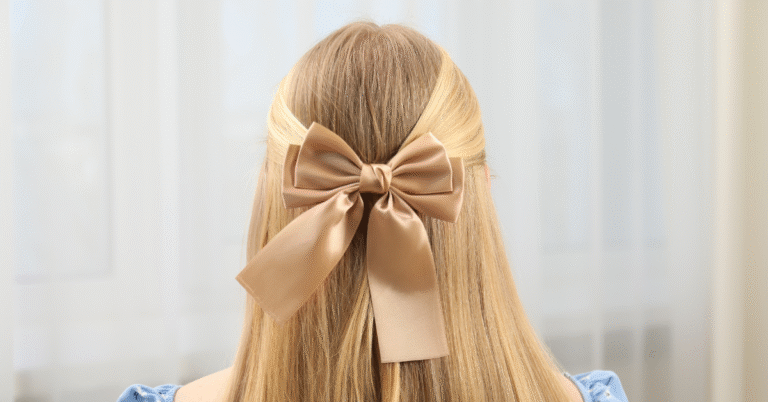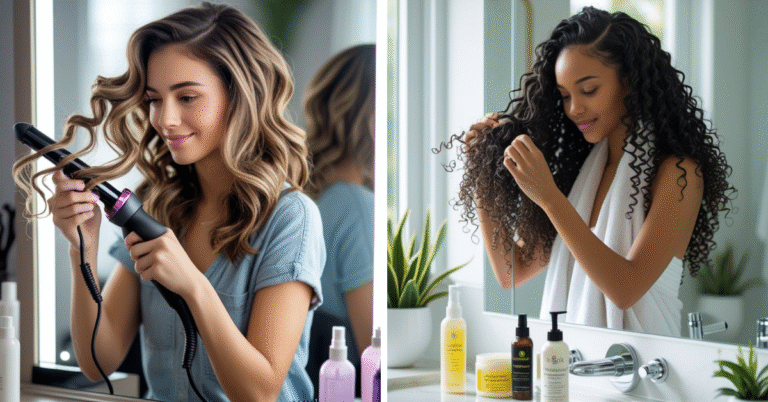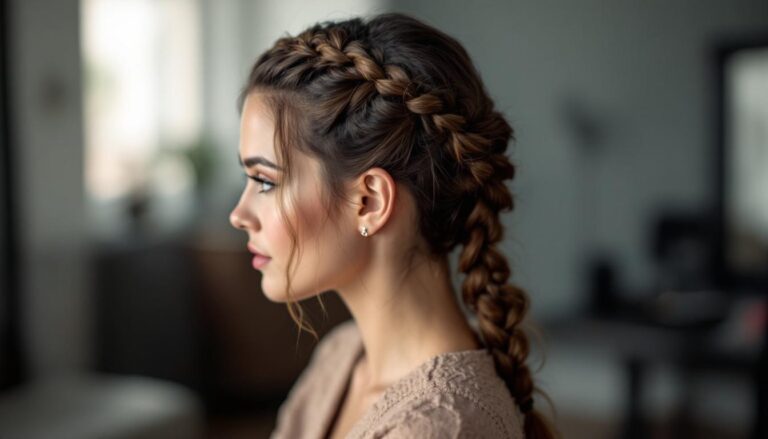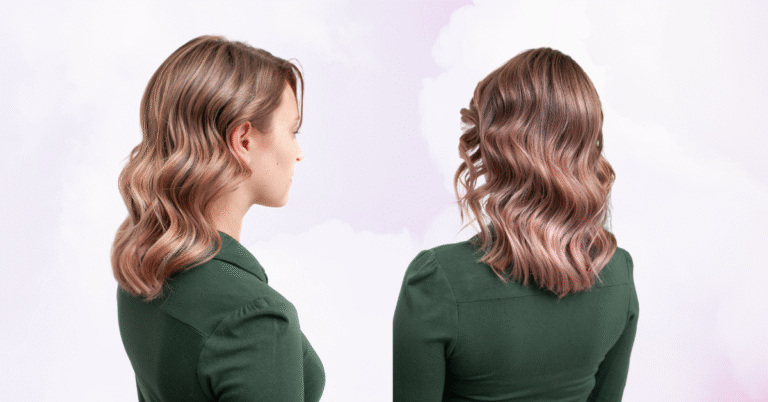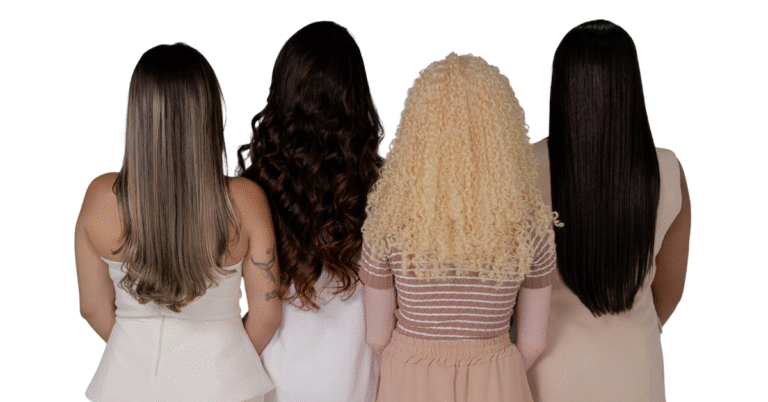How to Style Fine Hair for Volume and Lasting Hold
Styling fine hair can be challenging because it tends to look flat and lacks volume. However, with the right haircut, products, and techniques, fine hair can look fuller and more textured. Using lightweight products, avoiding heavy shampoos, and choosing cuts that add body are key steps to making fine hair appear thicker.
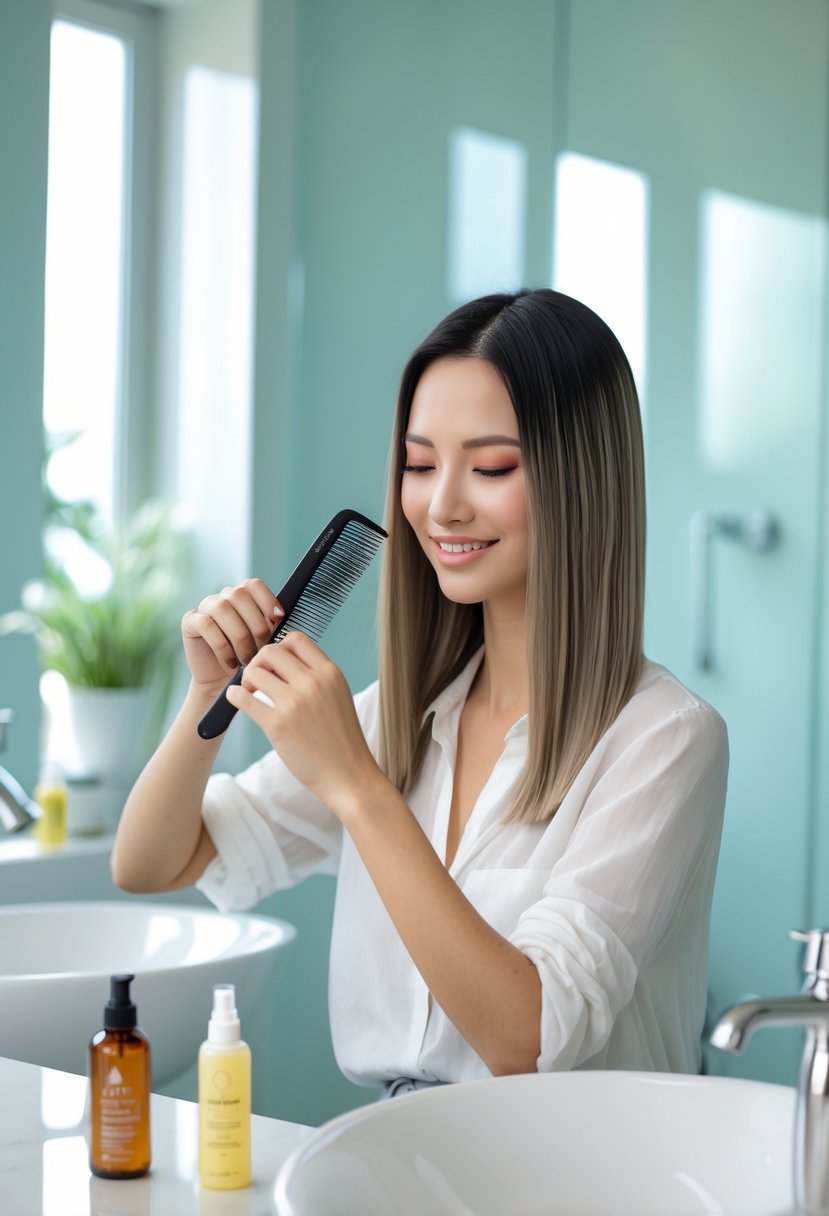
Many people with fine hair make common mistakes, like overloading their hair with product or skipping regular trims, which can weigh hair down or cause it to look limp. Learning how to avoid these errors while applying gentle styling methods can significantly improve the hair’s overall look and feel.
Building volume in fine hair doesn’t require a lot of effort once the right approach is found. Practical tips such as soft-hold sprays, proper drying techniques, and smart layering cuts help maintain a natural and lively style that suits fine hair well.
Understanding Fine Hair

Fine hair has unique traits that affect how it looks and styles. Knowing its qualities, challenges, and how to identify it can help in choosing the right care and styling methods.
What Defines Fine Hair
Fine hair refers to the thickness of individual hair strands, not the amount of hair on the head. A single strand of fine hair is thinner in diameter compared to medium or coarse hair. It tends to feel soft and silky.
Because the strands are thinner, fine hair can look flat or limp easily. It is often smooth and shiny but may lack natural volume. People with fine hair usually need lightweight products to avoid weighing it down.
Common Challenges for Fine Hair
Fine hair can be hard to style because it often falls flat and struggles to hold curls or volume. It can get greasy sooner since natural oils travel down the thinner strands faster.
Damage can show up quickly as fine hairs break or get split ends easily. Over-washing or heavy styling products can worsen these issues. Finding the right balance between care and styling is important to maintain body and texture.
Identifying Your Hair Type
One simple way to check if hair is fine is to feel individual strands between fingers. Fine hair feels thin and almost soft like thread. Another tip is to see how easily a single strand breaks.
Looking at how hair behaves when dry can help too. Fine hair usually appears flat and smooth but lacks thickness. If hair is easy to style but loses shape quickly, it likely fits within the fine hair category.
Best Haircuts for Fine Hair

Choosing the right haircut is key to making fine hair look thicker and fuller. Certain cuts add volume, while others use layering to create texture. Length also plays a big role in how fine hair behaves and appears.
Volume-Boosting Cuts
Haircuts like the blunt cut and box bob work well to create the illusion of thicker hair. These cuts keep the ends even and solid, preventing fine hair from looking wispy or thin.
The wolf cut is another popular choice. It combines short layers on top with longer layers underneath, adding height and fullness. A pixie cut with textured ends can also boost volume by removing weight from the hair.
Styling products can support these cuts. Lightweight volumizing mousse or sprays help hold the shape without weighing hair down.
Layering Techniques for Fine Strands
Layers should be soft and subtle, not heavy or choppy. Thin, gentle layers add movement and body but avoid cutting too much, which can make hair look thinner.
Longer layers work best for adding texture without reducing volume. Face-framing layers can also help by drawing attention to the shape of the face rather than the hair’s thinness.
Avoid layering close to the scalp. Stylists recommend starting layers a few inches down to keep volume at the roots.
Length Considerations
Medium-length hair often works best for fine hair. Hair that’s too long can look flat and lifeless because of the weight pulling it down.
Short styles, like pixies or lobs, give more control and bounce but may need regular trims to keep shape. Long hair can work if it’s layered well and styled with volume-enhancing products.
Choosing the right length depends on lifestyle and how much styling effort a person wants to put in. A balanced length combined with the right cut enhances body and fullness.
Effective Styling Techniques
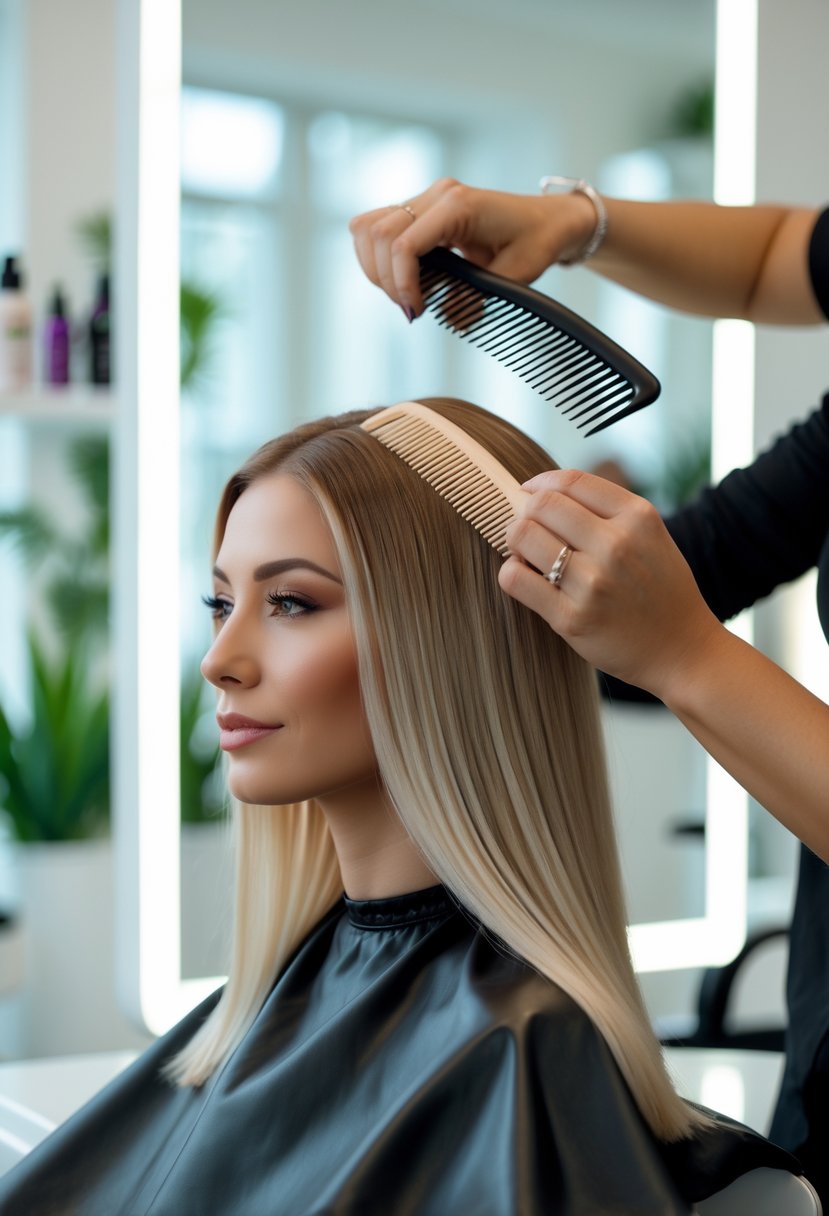
Fine hair benefits from careful techniques that add volume and structure without damage. Using heat tools with protection, mastering gentle teasing, and optimizing air-drying all help create fuller, longer-lasting styles.
Using Heat Tools Safely
Heat tools like curling irons and straighteners work well on fine hair but must be used with care. Always apply a heat protectant spray before styling to reduce the risk of damage. Use lower or medium heat settings, as fine hair is more prone to burning or becoming brittle.
Work in small sections to ensure even styling and avoid overexposure in any one area. Limit the use of heat tools to a few times per week to maintain hair health. After styling, a light mist of soft-hold hairspray can help hold the shape without weighing hair down.
Backcombing and Teasing Methods
Backcombing adds instant volume by creating a base of texture near the roots. Use a fine-tooth comb or teasing brush and work gently to avoid breaking delicate strands.
Start by sectioning hair, then lightly comb downward at the roots before smoothing the top layer. Focus teasing efforts on the crown for natural lift. Avoid harsh, aggressive strokes that cause tangling or damage.
Backcombing should be balanced with care to keep hair looking full but smooth. Finish by softly brushing the top layer to maintain volume without flattening.
Air-Drying Tips
Air-drying fine hair requires steps to prevent flatness and boost volume. After washing, gently blot hair with a microfiber towel instead of rubbing to limit breakage.
Apply a lightweight volumizing mousse or spray to damp hair, focusing on roots. Flip the head upside down and shake hair gently during drying to lift strands away from the scalp.
Avoid heavy products that weigh hair down. Periodically scrunch or tousle hair as it dries to create natural texture and fuller appearance without heat.
Choosing the Right Hair Products
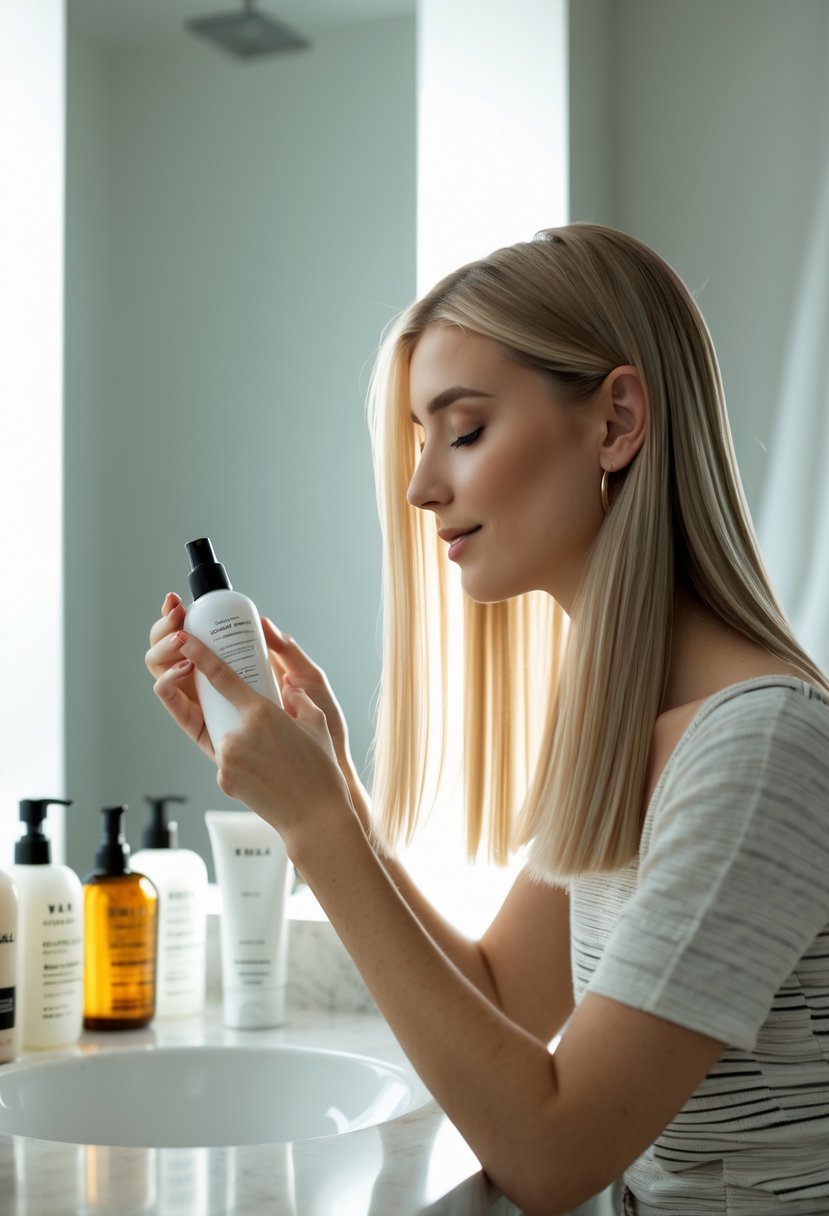
Selecting the correct products is essential for styling fine hair. The focus should be on adding volume and texture without weighing the hair down. Using the right shampoos, conditioners, and styling products can help achieve a fuller look and improve manageability.
Volumizing Shampoos and Conditioners
Volumizing shampoos and conditioners are designed to lift fine hair from the roots. They usually contain lightweight ingredients that cleanse without stripping natural oils. This helps maintain scalp health and prevent hair from becoming flat or greasy quickly.
Look for products labeled “volumizing” or “body-building.” Avoid shampoos with heavy moisturizing agents like silicones or oils, which can weigh fine hair down. Conditioners should be applied mainly to the ends to avoid smothering the roots.
Lightweight Styling Products
Styling products for fine hair need to add texture and hold without creating stiffness or heaviness. Mousse, light foams, and texturizing sprays work well to create volume and movement.
Products with soft hold help maintain styles while keeping hair flexible. Sea salt sprays are good for adding grip and fullness. Choosing formulas that dry quickly and feel weightless is important for fine strands.
Avoiding Heavy Formulas
Heavy creams, thick oils, and dense styling waxes should be avoided. These products can cause fine hair to look flat and greasy by weighing it down.
Instead, focus on oil-free or light oil options designed for thin strands. Using too much product or the wrong type can reduce volume and make styling difficult. Keeping product amounts small and targeted improves the texture and appearance of fine hair.
Daily Hair Care Routine for Fine Hair
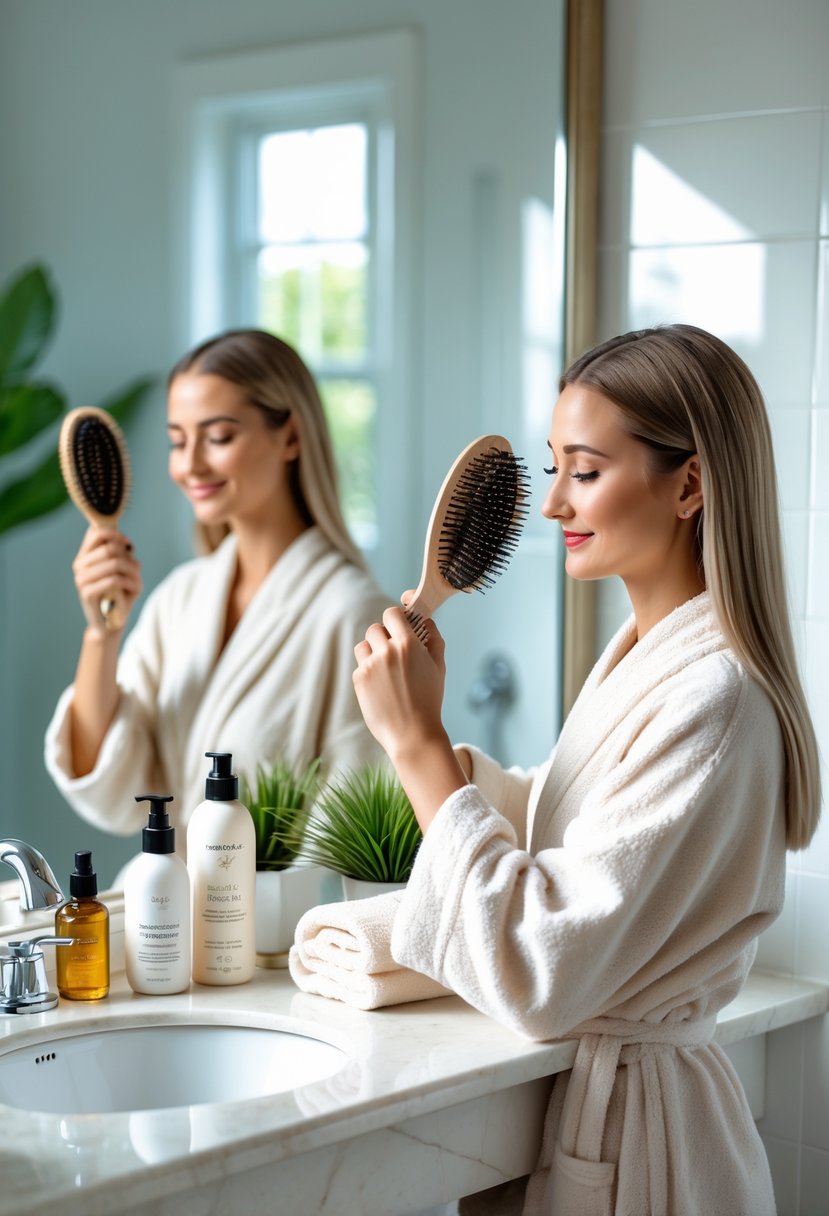
A good daily routine keeps fine hair healthy and full-looking. It involves washing hair the right amount, gentle detangling, and protecting strands overnight. Each step helps avoid breakage and maintain volume.
Proper Washing Frequency
Washing fine hair too often can strip natural oils, causing dryness and damage. Experts recommend shampooing no more than two to three times a week.
When washing, using a gentle, lightweight shampoo is important. It cleans without weighing hair down. Conditioner should be applied mostly to the ends to avoid making roots greasy.
Rinse hair with lukewarm water instead of hot water. Hot water can weaken fragile strands. On no-wash days, dry shampoo can refresh roots and add volume without moisture.
Detangling Without Breakage
Fine hair is more likely to break when wet. It is best to detangle right after applying conditioner in the shower using a wide-tooth comb.
Start combing at the ends, slowly working up to the roots. This method reduces pulling and snapping of strands.
Using lightweight leave-in conditioners or detangling sprays can ease combing. Avoid brushes with stiff bristles, as they can cause breakage. A soft, paddle brush or wide tooth comb is best.
Overnight Care
Protecting fine hair at night helps reduce tangling and friction. Wrapping hair in a silk or satin scarf or sleeping on a silk pillowcase lowers damage. These materials cause less friction than cotton.
If hair is long, tying it loosely in a low ponytail or braid prevents tangling. Tight styles can create stress at the roots and cause hair loss.
Avoid going to bed with wet hair. Wet strands are weaker and more prone to breakage from tossing and turning overnight.
Coloring and Treating Fine Hair
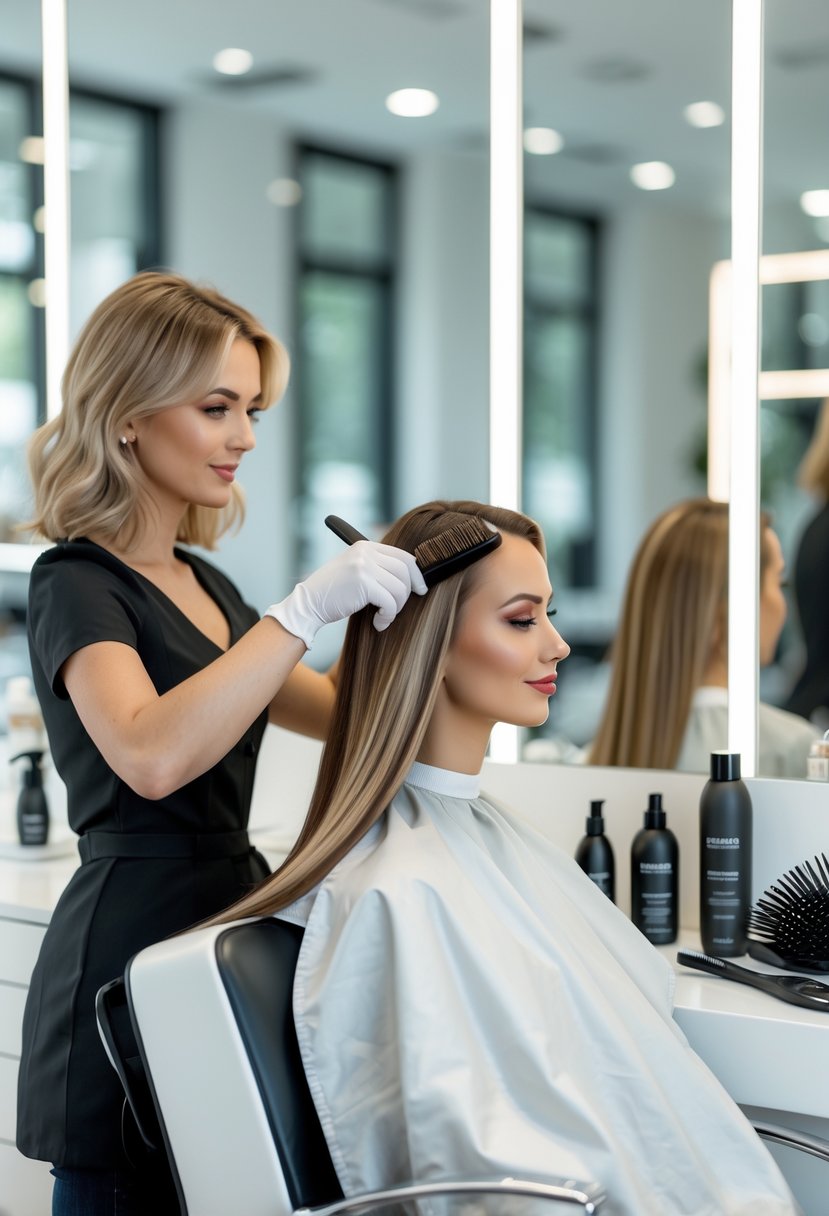
Fine hair needs special care during coloring and treatment to avoid damage and keep it looking full. It requires gentle techniques and protective products that maintain its strength and shine.
Best Coloring Techniques
When coloring fine hair, gentle methods like balayage or highlights work best. These techniques use less dye on the scalp and hair, reducing overall damage. Avoid full bleaching or harsh chemical processes.
Tips for coloring fine hair:
- Use ammonia-free or low-ammonia dyes
- Choose semi-permanent colors to reduce exposure
- Space out coloring sessions to give hair time to recover
These choices help protect fine hair from breaking or thinning further.
Protective Treatments
Using treatments that strengthen and moisturize fine hair is key. Protein-based masks and leave-in conditioners add support without weighing hair down. Treatments with keratin or silk proteins rebuild the hair’s surface.
Lightweight oils like argan or jojoba can add shine and smoothness. Avoid heavy creams that flatten fine hair. Regular deep conditioning improves hair elasticity and prevents breakage.
Minimizing Damage
Fine hair is fragile and breaks easily, so minimizing heat and chemical stress is important. Limit heat styling and use a heat protectant spray when necessary.
She should also avoid overwashing. Washing hair every 2-3 days keeps natural oils intact and prevents strands from becoming brittle.
Brushing gently with a wide-tooth comb detangles without pulling. Using soft-hold styling products prevents stiffness or crunchiness that can cause hair to snap.
Seasonal and Lifestyle Styling Tips
Fine hair needs special care depending on weather conditions and daily activities. Choosing the right styles and products can help maintain volume and manageability. Quick adjustments throughout the day can also prevent hair from falling flat.
Humidity and Weather Challenges
Humidity makes fine hair limp and frizzy. Lightweight, anti-humidity sprays can help keep hair smooth without weighing it down. Avoid heavy creams or oils that make fine strands appear greasy.
In rainy weather, a volumizing mousse applied to damp hair boosts body before blow-drying. Using a diffuser helps enhance natural texture without flattening the hair. Tying hair loosely or wearing styles like braids can control frizz and protect strands on humid days.
Cold, dry air can cause static. Using a leave-in conditioner or an anti-static spray prevents flyaways and breakage.
Workout-Friendly Styles
Sweat and movement during workouts can quickly flatten fine hair. High ponytails or braids keep hair secure without pulling too tightly. Using soft scrunchies avoids breakage.
Dry shampoo is helpful for absorbing sweat and oil after exercise, adding instant freshness and volume. A few strategic bobby pins can hold shorter layers in place during activity.
For those who prefer their hair down, applying a light texturizing spray before working out adds grip and reduces slippage.
Quick Fixes for Flat Hair
When fine hair looks flat midday, simple tricks revive it fast. Flipping the head upside down and shaking out the roots adds instant lift. A dry shampoo or volumizing powder at the roots absorbs oil and creates texture.
Using a round brush, quickly blow-dry the roots while lifting hair upward. Soft curls or waves made with a curling iron add fullness.
Avoid touching hair too much, as oils from fingers cause strands to flatten. A light mist of soft-hold hairspray locks volume without stiffness.
Quick Tips for Flat Hair Fixes:
| Action | Effect |
|---|---|
| Dry shampoo at roots | Absorbs oil, adds lift |
| Blow-dry roots | Creates volume |
| Light hairspray | Holds style softly |
| Avoid finger touching | Prevents flattening |

